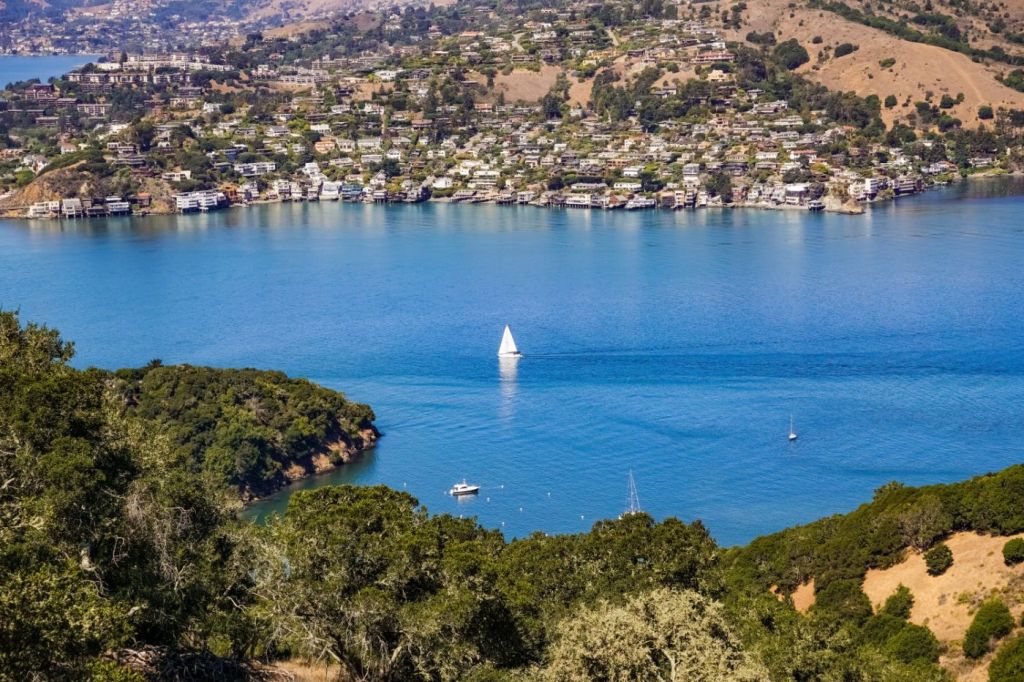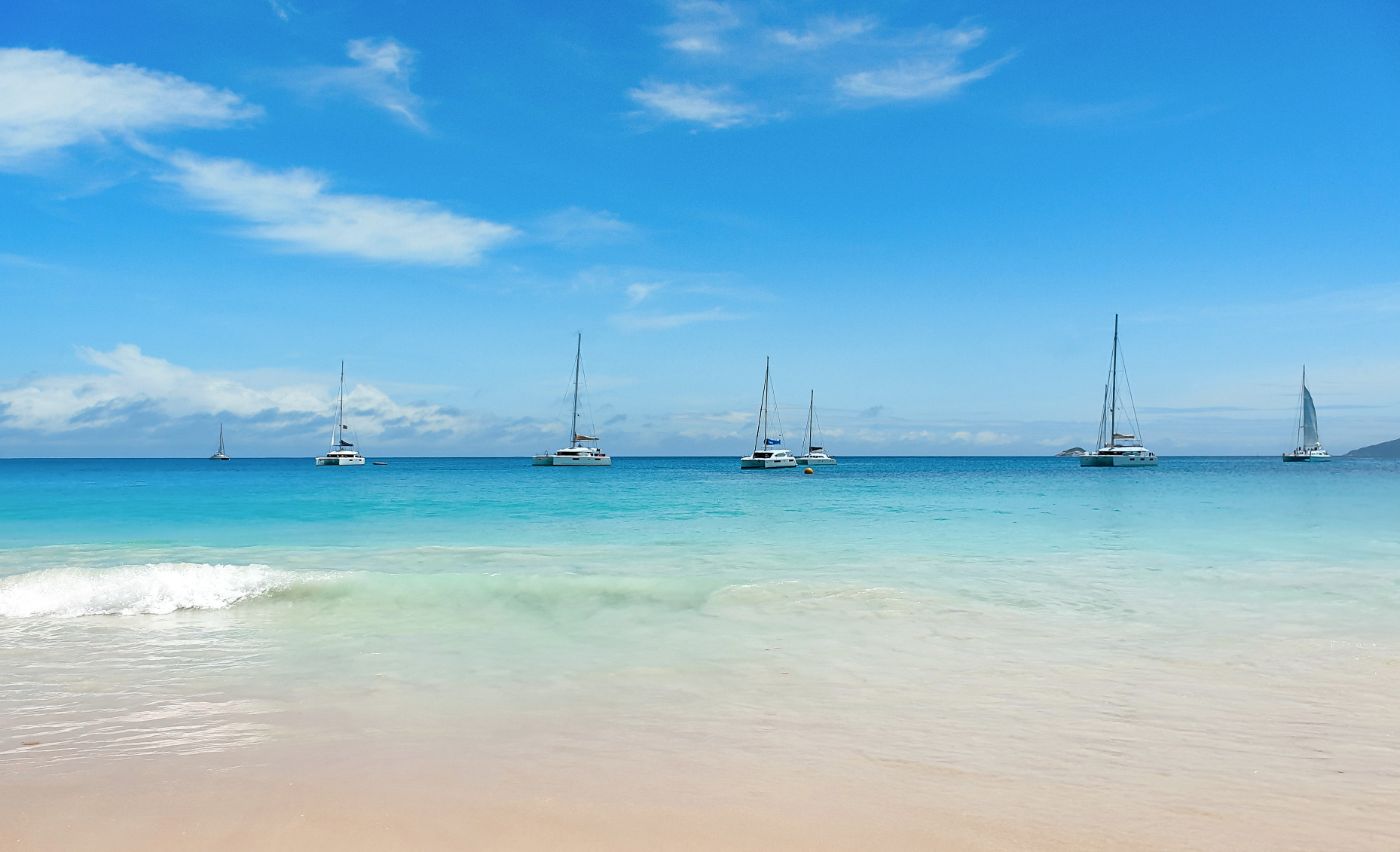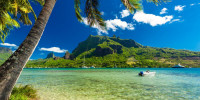How Long Does it Take to Sail from Tahiti to California?
The sail from Tahiti to California isn't an easy one. It's against prevailing wind patterns, crosses the doldrums, and is quite long. The rhumb line distance is almost 3,600 miles, but odds are high you won't be able to sail on the rhumb line.
If you can make six knots progress on the rhumb line, it will take about twenty-five days of sailing. In reality, prevailing winds and weather will make this trip much longer in time and mileage. Many sailors choose an alternate route to make their way back to California.
But you can use the table below to get an approximate rhumb line passage time.
A rhumb line is a straight line from point A to B on a map, and is used for navigation. Fun fact: if you'd walk any rhumb line, you'd go in a circle, due to the fact that Mercator projections are flat layouts of a spherical object (Earth).
Average sailing time between Tahiti and California
| Average Boat Speed | Approximate Days to Sail |
|---|---|
| 4 Knots | 38 Days |
| 5 Knots | 30 Days |
| 6 Knots | 25 Days |
| 7 Knots | 22 Days |
| 8 Knots | 19 Days |
| 10 Knots | 15 Days |
| 15 Knots | 10 Days |
These numbers are estimates of the straight line distance from Tahiti to San Diego. If you try to sail this course, you'll learn why most sailors coming back from the South Pacific take a different route. For an easier lesson, read on for a discussion on getting back to North America from the South Pacific.

Prevailing Winds, Currents and Weather
The key understanding you need for sailing the Pacific is the wind and weather patterns. The equator lies across the Intertropical Convergence Zone (ITCZ), known casually to sailors as "The Doldrums." The doldrums run about five degrees of latitude on each side of the equator and are characterized by light and variable winds and calms. Its size can vary from almost nothing to five or six hundred miles of light air sailing or motoring.
Outside the ITCZ, the Trade Winds dominate the wind patterns until about 30° from the equator. These are consistent, strong breezes from the east. In the northern hemisphere, they run from the northeast, in the southern hemisphere they are southeasterly. Because of its reliability, this band of wind was crucial to trade routes in the age of sail, hence the name.
Sailing from Tahiti to North America, that’s a band of Northeasterly wind about 1,500 miles in latitude, but you'll be sailing across it diagonally so it’s longer. That's a great downwind run from San Diego to Tahiti, but a long and unpleasant slog back upwind in the other direction. You can do it, but we know it to be a slow, grueling trip once you get into the northeast trades past the equator.
Longer Routes vs. Easier Sailing
There may be compelling reasons to make the long upwind trip straight to California. On paper, a straight line IS the fastest way between two points. But it's not always the easiest when you're sailing offshore.
Most cruisers are racing against some time constraint, but it's usually weather and seasons, not other boats. Timing weather and seasons allows you to sail around unpleasant and difficult areas, and see some cool things along the way. So if you don't have a drop dead date to get back to California, planning an alternate route will be safer and much nicer.

The Hawaii Route
Sailing to Hawaii from French Polynesia is a more common route from the South Pacific. Instead of sailing straight into the trades, you sail more across them. You'll also find stopping places along this route to break the trip up. These are pretty remote; you must bring the provisions and fuel you need for the entire trip.
From Hawaii to California has a different challenge, with the North Pacific High sitting between Hawaii and the mainland. With light and contrary winds in the middle of this permanent high-pressure zone, sailors sail north to avoid it then skirt the edges, riding the favorable west winds which rotate around the high in a clockwise direction. Coming from California, they will skirt the high to the south to catch favorable easterlies.
The North Pacific high can run from 32° north in the winter to as far as 40° in the summer months. San Francisco lies about 38° north, so a run back in the summer will land you in Northern California unless you work south again past the high.
If forced to sail to 40°, many cruisers will opt to continue north to the Pacific Northwest to make landfall, and spend the rest of the summer in the islands and archipelagos of Puget Sound. It's longer, but it can make for a better sail.
Get all the details on sailing this route
Sailing from Tahiti to Hawaii brings its own challenges. I've looked into it for my own passage planning.
Read all on sailing from Tahiti to Hawaii
Leaving from the Marquesas
When dealing with northeasterly winds, heading some ways East (or North) will change your sailing angle to the wind and give you better conditions. The Marquesas lie about 700 miles northeast of Tahiti, but you're sailing there in the southeasterly trades so it's not a hard sail. And it gives a solid 500 miles of progress to the east.
As a result, leaving the Marquesas for Hawaii makes for an easier passage, and it would shorten the trip to California. On the rhumb line route, the Marquesas are only a short diversion and can be a better place to find your weather window and make a shorter sail since you've put that 700 miles under your belt before you leave.
Pros & Cons of Sailing Directly to California
The chief advantage to sailing straight from Tahiti to California is on paper - it should be the shortest and most direct trip. If you get good conditions and weather and have a bit of luck, it could be short. In theory.
But that's the only real advantage.
Disadvantages include:
- The sailing is predominantly upwind once you leave the doldrums, and that's a lot of upwind.
- There aren't any good stopping places once you get past the doldrums, unlike the Hawaii option.
- It's longer, so you need to carry more food, fuel, and water.
- With all the upwind sailing, you can expect 20% or more extra miles to sail.
- Upwind sailing on long passages is more tiring, and takes constant adjustments to sails and the helm, and many autopilots do not do it well.
Preparing for a Long Upwind
As an American cruiser sitting a long way downwind from the U.S. and looking to get back, I've spent a lot of time poring over weather charts, cruising notes, and plans. The idea of a long upwind back to the U.S. isn't appealing, but there are a few things you can do to plan for it.
- Plan to get east. This means leaving from the Marquesas if you can instead of Tahiti, for better angles.
- Alternatively, you could head due north first to offset the trades, but that will take you halfway to Hawaii before it makes a difference.
- Bring extra fuel and water. By the rhumb line, it's 3,500 nautical miles, but you might have to sail close to a thousand extra miles tacking across the wind.
- Prep for discomfort. Sailing upwind in an around-the-cans race or even a weekend trip isn't a big deal. Spending days on days at a fifteen or twenty degrees of heel get's old fast, and it's exhausting. Everything from cooking to using the head to sleeping is more difficult. - Consider a smaller headsail. A huge headsail is nice in light air, but when you're going upwind you will have a lot more apparent wind. A smaller jib can help you keep pointing, but also stop you from being overpowered and on your ear all the time.
Resources
If you need to do this trip this way, or if this article has convinced you to seek a gentler route, there's plenty more information out there on how best to make this passage. This article is the very basics, and a deep dive into planning for the weather and your route is critical before you set sail.
Everyone who aspires to cross an ocean should have Jimmy Cornell's World Cruising Routes (check at Amazon) at their fingertips. Familiarize ourselves with the ways to get around in the world, and closely. read the chapters on South Pacific wind and weather patterns. While you will find details on a California to Tahiti route, there is no detail on the reverse because it isn't a common trip to make.
The most comprehensive resource for sailors on entry requirements, border procedures, and other information relevant to international cruising is Noonsite.com. Consult it early and often, and save relevant pages for the countries in your path to your PC locally, unless you have really good satellite data.
Consult Pilot Charts for sailing conditions by month as compiled from decades of compiled weather and climate information. They can be downloaded for free, and will give you an idea of what you can probably expect as the seasons change.
Did you find the answer to your specific question?
👍 7 👎 0



Leave a comment